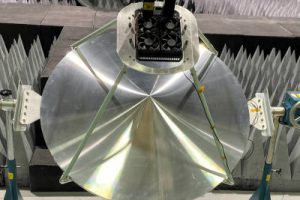
“The Miura-Ori pattern has an infinite number of possible positions along its range of extension from fully compressed to fully expanded,” said Glaucio Paulino, the Raymond Allen Jones Chair of Engineering and a professor in the Georgia Tech School of Civil and Environmental Engineering, explained the reason for this choice was that the pattern has an infinite number of possible positions from fully compressed to fully expanded. “A spatial filter made in this fashion can achieve similar versatility, changing which frequency it blocks as the filter is compressed or expanded,” he added.
A printer was used to score paper to fold into the origami pattern and then an inkjet printer applied silver ink across the perforation to form dipole elements that provide the RF filtering. When the paper was folde, the dipoles bent and came closer together which caused the resonant frequency to shift higher. A cut was made to form a bridge along each dipole to allow the silver to bend more gradually. For testing various positions of the filter, the team used 3D-printed frames to hold it in place.
The research team found that a single-layer Miura-Ori-shaped filter blocked a narrow band of frequencies while multiple, stacked layers of filters achieved a wider band of blocked frequencies.
As the origami form is flat when fully extended and compact when compressed, the antenna systems could be stored in small spaces until used, this is common in space applications, says the team. The systems were assembled form sheets approximately 0.1mm thick to create strong, yet lightweight structures that are easy to transport for use in the next generation of cubesats and other space communications devices. Another advantage is that the single plane, along which the objects expand, could use less energy compared with antenna systems that require multiple physical steps to deploy.
The study was supported by the National Science Foundation, the US Department of Defense, and the Semiconductor Research Corporation.
 Electronics Weekly Electronics Design & Components Tech News
Electronics Weekly Electronics Design & Components Tech News

